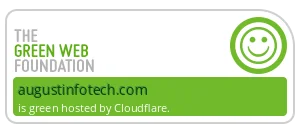Introduction:
PHP, which stands for Hypertext Preprocessor, is a popular scripting language in web development. PHP 7.4 life ended on November 28, 2022. PHP 8 was released on November 24, 2022, as the modern web development standard. This blog aims to upgrade to PHP 8 from older versions. We will highlight the key points between PHP 7 and PHP 8.1 and provide a step-by-step guide for a smooth upgrade, emphasizing the importance of the PHP 8.1 update process.
A deep dive into PHP 8:
PHP 8 is a significant change for web developers. It’s not just an upgrade from PHP 7.4; it’s a substantial transformation. It brings a bunch of new and advanced features like named arguments, attributes, union types, constructor property promotion, match expression, null safe operator, and a super-fast thing called JIT (Just-In-Time) compilation, showcasing PHP 8 features and PHP 8 improvements. Recently, PHP 8.2 was released, indicating the rapid evolution of PHP towards and efficiency for software development service experts.
The significance of PHP 8:
Moving to PHP 8 means more than just following the latest tech trends. It’s about adopting a platform that makes your websites faster, more secure, and more efficient. The JIT compiler is a big deal, making your code run much faster – some tests have shown a 25% PHP 8 speed boost. PHP 8 also brings in features like union types, attributes, and better error handling and types, significantly improving over earlier versions and showcasing the PHP 8 advantages.
Why upgrade to PHP 8?
Upgrading to PHP 8 is not just a recommendation; it’s a necessity for several reasons:
-
Long-term support: PHP 7 no longer has support. But PHP 8 provides the support and security updates, emphasizing the need for PHP 8 migration.
-
Improved security: PHP 8 has a better security level, like more robust data protection and improved encryption support, highlighting PHP 8 security.
-
Better error handling: It provides better error handling functionality, allowing users to find and fix bugs quickly, showcasing PHP 8 error handling.
-
Faster performance: PHP 8 is faster than PHP 7, which means your website will load faster and be more efficient, underlining PHP 8 performance.
The risks of staying with PHP 7.4:
Continuing with PHP 7.4 can expose your website to in risks:
-
Security vulnerabilities: Older PHP version 7.4 may not have the latest security updates, making your site more at risk, a critical point for offshore web development companies.
-
Lack of support: Older PHP versions are no longer supported. It means your site does not receive important updates and fixes, highlighting the need for PHP 8 migration steps.
-
Performance issues: Newer PHP versions offer significant performance improvements that older ones don’t have.
-
Compatibility problems: New PHP releases might introduce features that don’t work well with older code, potentially causing problems for your site.
-
Missing out on innovation: By not upgrading, you’ll miss out on the cool new features that newer PHP versions bring, a key consideration for those interested in PHP 8.1 tutorials and upgrading PHP from 7 to 8.
How to update to PHP 8:
Updating to PHP 8 involves several critical steps:
-
Check compatibility: Check the PHP 8 compatibility using tools like PHP Compatibility Checker to ensure your code is ready for PHP 8.
-
Back up your data: Always take you back up when we are performing the major changes. it will help to compare with older version.
-
Update PHP: Upgrade your operating system and use your package manager to install PHP 8.
-
Update dependencies: Ensure all dependencies and extensions are compatible with PHP 8.
-
Test and debug: Rigorously test your code in PHP 8 and debug any issues.
-
Deploy: Once You satisfied with upgrade PHP, You can deploy your code to your production environment.
How to update to PHP 8 step by step:
Updating PHP 8 is a step in maintaining the project health and security. Recently I have upgrade the PHP 8.1 with PHP older version, I can provide you first-hand insights into the process. Here’s how you can smoothly upgrade the PHP 8.
- Existing Project Setup and Backup:
- Begin by setting up a backup of your existing project. Use a different database but with the older PHP version. This setup is crucial as it allows you to compare the functionality with the new version.
- Clone project with new PHP version:
- Clone a new project and set up a corresponding database, but this time, use the new PHP 8 version. This step is essential to start the upgrade process.
- Install PHP extensions:
- Ensure that you install the same PHP extensions that were used in the older version. Consistency in extensions helps in maintaining feature compatibility.
- Enable PHP error reporting:
- Make sure to enable PHP error reporting. This will help you identify and address warnings, fatal errors, and syntax errors promptly during the transition.
- Fix warnings, fatal errors, and syntax errors:
- Diligently work through fixing any warnings, fatal errors, and syntax errors that arise. This step is critical for ensuring that your application runs smoothly on PHP 8.
- Check library versions and support:
- Verify that the libraries you are using are compatible with PHP 8. Upgrade them if necessary. For libraries that are no longer supported, seek out replacements.
- Find replacements for unsupported libraries:
- In cases where certain libraries have ceased support and are incompatible with PHP 8, research and find suitable replacements. This might require some adjustments in your codebase to accommodate new libraries.
- Upgrade cron jobs:
- Don’t forget to upgrade your cron jobs as well. Ensure they are compatible with PHP 8 and functioning as intended.
- Conduct thorough testing:
- Rigorous testing is the final and most crucial step. Test every aspect of your application in the PHP 8 environment to ensure everything functions as expected. Compare the performance and functionality with your older version to confirm that all aspects are working seamlessly.
Potential risks of DIY PHP updates:
If you try to update PHP, you could face problems like plugins not working, your website going offline, slower performance, and unexpected expenses. Sometimes, it’s better and safer to hire a dedicated team of dedicated developers or seek when switching to PHP 8.1.
Conclusion:
In conclusion, upgrading from PHP 7.4 to PHP 8 is complicated for web developers, offering long-term support, enhanced security, improved error handling, and remarkable performance gains. PHP 7.4 poses security risks, compatibility issues, and the loss of innovative features. Our step-by-step guide emphasizes the importance of compatibility checks, backups, error reporting, and thorough testing.
However, undertaking a DIY PHP update can lead to plugin problems, website downtime, performance issues, and unexpected costs, making it wise to seek help from a software development company in India. Embracing PHP 8 is an investment in your website’s future, ensuring enhanced security, speed, and efficiency in the ever-evolving web development landscape. Furthermore, those interested in building web apps with Python can explore further insights into Python vs PHP by visiting this page, a valuable resource for Python web application development.






